
Joseph Gerhard Zuccarini was a German botanist, Professor of Botany at the University of Munich. He worked extensively with Philipp Franz von Siebold, assisting in describing his collections from Japan, but also described plants discovered in other areas, including Mexico. Siebold wrote his Flora Japonica in collaboration with Zuccarini. It first appeared in 1835, but the work was not completed until after his death, finished in 1870 by F. A. W. Miquel (1811–1871), director of the Rijksherbarium in Leiden.
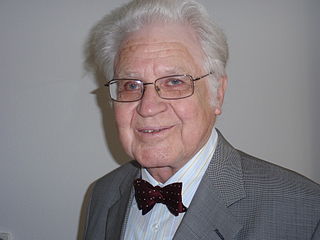
Kai Larsen was a Danish botanist.

Johann Müller was a Swiss botanist who was a specialist in lichens. He published under the name Johannes Müller Argoviensis to distinguish himself from other naturalists with similar names.
Wittmackia is a genus in the family Bromeliaceae.
Carl Clawson Epling was an American botanist and taxonomist. He is best known for being the major authority on the Lamiaceae of the Americas from the 1920s to the 1960s. In his later years he also developed an interest in genetics.

Carl Christian Mez was a German botanist and university professor. He is denoted by the author abbreviation Mez when citing a botanical name.
Julian Alfred Steyermark was an American botanist. His focus was on New World vegetation, and he specialized in the family Rubiaceae.
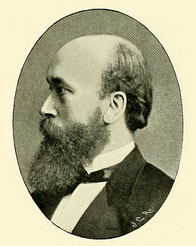
Carl Ignaz Leopold Kny was a German botanist, notable as a specialist in research involving the morphology of fungi and cryptogams. He is well known for his production of the Botanische Wandtafeln. The standard author abbreviation Kny is used to indicate this person as the author when citing a botanical name.
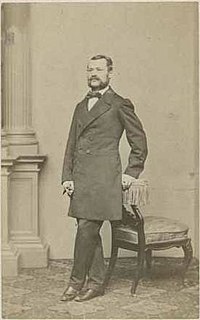
Ludwig Adolph Timotheus Radlkofer, was a Bavarian taxonomist and botanist.
Ernst Heinrich Friedrich Meyer was a German botanist and botanical historian. Born in Hanover, he lectured in Göttingen and in 1826 became a professor of botany at the University of Königsberg, as well as Director of the Botanical Garden. His botanical specialty was the Juncaceae, or family of rushes. His major work was the four-volume Geschichte der Botanik. His history covered ancient authorities such as Aristotle and Theophrastus, explored the beginnings of modern botany in the context of 15th- and 16th-century intellectual practice, and offered a wealth of biographical data on early modern botanists. Julius von Sachs pronounced him “no great botanist” but admitted that he “possessed a clever and cultivated intellect.”
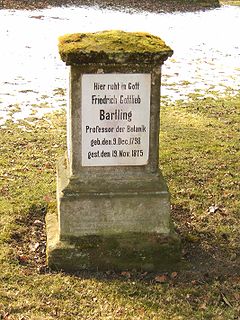
Friedrich Gottlieb Bartling was a German botanist who was a native of Hanover.
Johannes Ludwig Emil Robert von Hanstein was a German botanist who was a native of Potsdam.

Georg Franz Hoffmann was a German botanist and lichenologist. He was born on 13 January 1760 in Marktbreit, Germany, and died on 17 March 1826 in Moscow, Russia.
Sidney Fay Blake (1892–1959) was an American botanist and plant taxonomist, "recognized as one of the world's experts on botanical nomenclature."
Wittmackanthus is a monotypic genus of flowering plants in the family Rubiaceae. The genus contains only one species, Wittmackanthus stanleyanus, which is found in Panama, Colombia, Ecuador, Peru and Guyana.
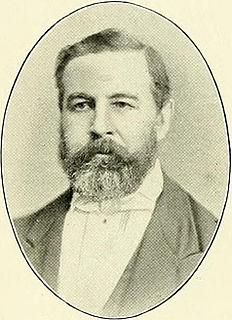
Karl Friedrich Wilhelm Jessen was a German botanist.
Werner Walter Hugo Paul Rothmaler was a German botanist and from 1953 until 1962 head of the Institute for Agricultural Biology of the University of Greifswald. His areas of expertise included plant geography and systematics.
Augusto Weberbauer was a German naturalist, botanist and university professor. He conducted systematic exploration of Peru in search of new plant species. Weberbauer received his PhD in botany at the University of Breslau (1894), continued his studies in natural sciences at universities in Heidelberg and Berlin. He taught at the University of Breslau. He was commissioned by the Royal Academy of Sciences in Berlin to develop botanical research in Peru (1901). In 1905, he delivered 5200 species of seagrass which he had collected in Peru. The Peruvian government hired him to develop the Zoo and Botanical Garden in 1908. He received the degree of Doctor of Science at the National University of San Marcos in 1922. He taught here as professor of pharmaceutical chemistry (1923–48) and Systematic Botany (1925–48), as well as directing the Botany Seminar (1935-1948). The wild potato species, S. neoweberbaueri, collected by Weberbauer on Morro Solar, was named by Ludwig Wittmack in 1914.
Théodore (Teodoro) Caruel was an Italian botanist of French-English parentage who specialized in flora of Tuscany.
Hermann Schacht was a German pharmacist and botanist, who specialized in the fields of plant anatomy and embryology.









